-
Appearant new bug
Hi, Ya all.
I am new to Knoppix, I just installed it two days ago, along with Ubuntu 12.10 in a dual boot system.
My reason for being here is two fold for the present. After spending the better part of the last two days installing and re-installing Knoppix on a partition on my SDD hard drive, I found that I have a bit of a problem that I am unable to resolve.
On my system I have three hard drives one is 500 GB, the second is a GPT formatted 3TB harddrive, and the last one is a 256GB SDD harddrive that my two operating systems are installed on.
The problem is that the GPT drive isn't being read right by both GParted, and Disk Utility in two different ways. In Disk Utility, my number one Partition is getting a Yellow flag warning that reads as follows:
"Warning: The partition is aligned by 3072 bytes. This may result in very poor performance. Repartitioning is suggested."
I have repeatedly tried to repartition this and varied the start and end of the partition from up to 100MB, both at the same time, and used "align to Cylinders" multiple times, all to no avial. The message always comes back, and is always the same number of bytes. Also the drive is completely inaccessible.
Now in GParted The number one partition appears fine but the number three partition when it is mounted will show a yellow flag that states:
"Cannot find Mount point. Unable to read files or data on this partition.", or something of that nature. Also neither GParted nor Disk Utility will mount this partition. In order to mount it I have to go to Ubuntu and mount it in either GParted or Disk Utility, and come back to Knoppix in order to show the flag on it.
Both of these partitions show good in Ubuntu and read just find. The number one drive doesn't show in the file manager at all whether mounted or not. Number 3 shows, but gives a "No access" error if you try to access it. Both were reformatted in both Knoppix and Ubuntu, and both are NTFS file systems for accessability of multiple systems.
So, has anyone done any work with GPT formatted drives and found work arounds for the errors that seem to be inherent to this combination? I tried to report this bug with the bug reporting tool in Knoppix but, was asked the package name and wasn't able to give the tool whatever information it was expecting so couldn't use it.
I am new to Knoppix as an operating system and in spite of its bugs really like it. It is the most exciting OS I have found so far, and I hope it continues to improve over time. So, has anyone who has used it for a while been able to find some work arounds for the GPT errors I am getting? I would really like to get those partitions working. Also I need to say that the errors both show the same whether I am using the live disk or the harddrive mounted versions.
My system consists of an ASUS Rampage III with an i7 970 6 core processor, and two ASUS 560 Graphics cards, and 24GB of RAM.
Any help would be greatly appreciated. Thanks
-
Senior Member
registered user
Simple answer: You should not have tried to install Knoppix to that system the way you did. And you don't tell which version - I assume 7.0.5 - if that's not what you have got, get it.
Simple question: Why do you format NTFS file systems in Ubuntu or Knoppix? Since when was that a fool-proof practice?
Simple suggestion: Setup all partitions with Windows (NTFS) and Ubuntu (Linux). Check that everything runs fine. DO NOT TOUCH THEM with Knoppix tools, if these give any indication of being unreliable. While Knoppix may provide some of the best all-round tools, working with the widest range of hardware, it may well happen that newer configurations are not yet well supported.
You don't need a separate Knoppix partition on your SSD. Just install Knoppix to flash media using the built-in function. Setup everything you need there, then copy the KNOPPIX directory from flash to the partition of choice, and run it from there. On SSD, I normally set up 20-40 GB system partitons. Then I have room both for KNOPPIX directories (ca 8GB, cloop+loop images) and a native install, like Ubuntu or Scientific Linux. They don't bother each other, so there is little reason for reserving a partition solely for Knoppix.
Last edited by Capricorny; 02-08-2013 at 02:06 AM.
-
Senior Member
registered user
I think I should elaborate a bit on this install issue, because Knoppix is what it has always tried to be, and that is not what most newcomers are likely to expect today. Nowadays, most distros come with a "live" alternative, used for checking out the distro, casual use, and hard disk install. The system is usually optimized for the hard disk install, running the live disk is just an alternative.
With Knoppix, it is the other way round. Knoppix is not optimized for hard disk installs, but to be used as a live distro, running "as is", that means cloop (or squashfs) image + ramdisk or persistent store from USB media or copies to pre-existing hard disk partitions. Recent Knoppix versions have worked very well also in ordinary hard disk installs on standard hardware, but in some cases this is for some reason problematic. Mostly, I think this should not be viewed as bugs in Knoppix, but rather as limits in hardware support out of the box.
Users can install cutting edge Debian packages for handling "novelties" like GUID/GPT formatting and booting, so anyone can tailor Knoppix to be as much of a Swiss Army Knife as he/she likes, but don't expect this to be implemented fully with "zero work needed" for the user in this or the next release.
Because current Knoppix is in so many ways close to standard Debian, it is only natural that users trying it out think it is a no-nonsense, user friendly Debian compilation. But it isn't, it just looks like one. It would be very useful to have something like that, but I believe the developers of the standard Debian distro are the right ones to talk to about this, not Klaus Knopper.
For "full" installs of Knoppix on non-supported hardware, I think the best approach might be to dissect the 0wn package, and redo the steps manually, changing tooling and making adjustments as necessary. If Ubuntu works, in principle a modified version of Knoppix should, too. Afterwards, write it up, post it here, and on the debian-knoppix mailing list. If it's not too much of a hack, it might find its way into a Knoppix release soon!
-
In answer to your question about the NTFS file systems, I have them set up as NTFS because any programming can read that format. Not true of some of the Linux formats. Can't usually read them in Windows. As long as I have Windows systems that I use with the files on these disks, I want them all accessible to the various systems I use. If Linux comes up with an all round format that is accessible to any system including Windows then I will consider changing the file system. For now this seems the most accessible one available. I am also aware of the limitations with Knoppix, and still have found it to be fairly easy to work with in spite of some of the silly problems I seem to have encountered. I actually had to uninstall Ubuntu because it became more work to try and troubleshoot than I had expected. Three times I insalled it and three times it ended up being either unbootable, or booted only when it felt like it. Knoppix has been relatively easy compared to Ubuntu, and I like it better, with the interface it has. I hate the 12.10 interface on Ubuntu. As for the GPT problem, it seems that none of the Linux distros I have used so far like it very well so far. I think that they have a ways to go to get it worked out. GPT is so new, and there are things that I haven't worked out about it yet. If I can find some room to transfer the files off of the GPT drive I will try to re-format the whole drive. As it is I did format it initially in Windows 7 before Microsoft "unauthorized" my third purchase of their software. It is why I have no Windows on my system as of today. Maybe I will eventually work out my differences with Microsoft, but, for now I am just running on what I have and that more or less works. Since the initial formatting I have reformatted some of the disks because I found that some had some unused space between partitions. Then I found the errors and have tried manipulating the various partitions to correct the errors, pretty much to no avail. Unless I can strip the drive of files and completely start over, I think I am just stuck with the errors for now. I am busy trying to work things out like the printer connection. That kept me working for most of today on it, and when I tried to install the drivers I got hung up on the authorization because I installed it without a password initially, which caused me trouble authorizing the drives because it resulted in an error. I got the printer working, but, I never did get it to accept the authorization. Which begs the question why the printer is working now. I reset the password in safe mode, but, it still wouldn't take the password that I set it to. Go figure. I'll admit it is not trouble free, but, it is better than my experience so far with Ubuntu. At least it will boot every time and do what I want to do.
-
Senior Member
registered user
My question re NTFS was not why you use it, which you had explained very clearly. It was why you had done the NTFS-formatting in Linux, which may work well, but in no way can be considered as foolproof.
In order to run Knoppix correctly, you need just one partition that works fine. As I wrote, you can just copy the KNOPPIX partition from an USB media install to the actual partition, and use the fromhd cheatcode to use just that partition, and nothing else. Printer setup in plain Knoppix (no hard disk system installs, just the Poor Man's Install I refer to here) can be done via http://localhost:631/, with no particular authorizations needed for me.
-
O.K. I am sorry I misunderstood. As I said in fact, I actually initially made the partitioning in Windows 7 before Microsoft "unauthorized" my third purchase of the OS. I did redo some of them when I saw that the partitions had some extra unformatted partitions between some of them. Maybe that was a mistake, but, at the time it seemed like a good idea. I know that I never got the partitions right even in Windows because one of the techs over at Ubuntu was telling me about some of the difficulties with GPT partitioning, and I still haven't figured out what he is saying. He says the partitions have to be devisable by 8. I don't really know what has to be devisible by 8, whether it is cylinders or MB of disk space? just that it has to be something. My real problem isn't really with the GPT drive because it is just data and I am not using it for OS installation. I am trying to iron out the OS glitches. I did get the printer to work, though the menu that comes up defaults to an entry that doesn't work. Don't really know how to remove that or I would try to get to default to the one that does.
I also am having a problem with the ARandR. It doesn't work at all. I have my TV and my screen mirrored through an HDMI connector, and it works fine, but, I don't get the ARandR user interface at all. Also, I have found that once I save a letter file from the Office program I can't rename it because I get an error that says the "file of that name doesn't exist". It would if it would complete the renaming process.
I did have to work very hard to get Adobe Flash player installed on the icewheasel browser, but, I finally got it worked out by myself which made me feel pretty good. None of the information I found even came close to getting the command line syntax right, and once I did it was just a matter of adding "sudo" to it and it installed in the folder. The one thing I can't find is a way to install Shockwave which some web sites use for video operation and I can't get Flashplayer to run them. I haven't had a chance to see if there was a Linux Shockwave clone or something that would work to run them. Do you happen to know if there is a program that will run ShockWave vids?
-
Senior Member
registered user

Originally Posted by
E-Tramp

I did have to work very hard to get Adobe Flash player installed on the icewheasel browser, but, I finally got it worked out by myself which made me feel pretty good. None of the information I found even came close to getting the command line syntax right, and once I did it was just a matter of adding "sudo" to it and it installed in the folder. The one thing I can't find is a way to install Shockwave which some web sites use for video operation and I can't get Flashplayer to run them. I haven't had a chance to see if there was a Linux Shockwave clone or something that would work to run them. Do you happen to know if there is a program that will run ShockWave vids?
You are obviously doing lots of unncessesary extra work.
The straightforward method to play Adobe Flash, which seems to work for me, is to use Synaptic and install the non-free flash plugin, in Synaptic it is listed as flashplugin-nonfree.
Furthermore, it seems that all may not be well with your file systems - another reason to setup somethin really simple, like FAT32, on a volume, and copy in Knoppix the way I have described. That way, write access is to just one file, the loop-mounted persistent image file knoppix-data.img.
But you are of course free to make things as much of an hassle as you like. 
 Posting Permissions
Posting Permissions
- You may not post new threads
- You may not post replies
- You may not post attachments
- You may not edit your posts
-
Forum Rules

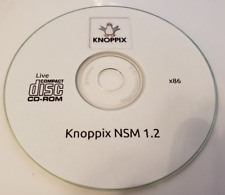
Knoppix NSM 1.2
$8.50
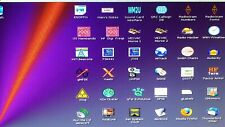
Hamshack Live DVD-ROM
$6.80
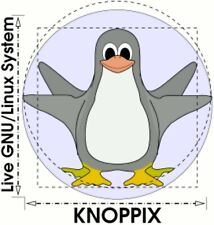
Knoppix Live GNU Linux System 9.1 on Bootable CD / DVD / USB Flash Drive
$9.99
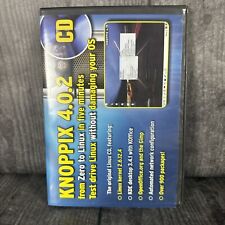
Linux Knoppix 4.0.2 Installation Disc
$39.99
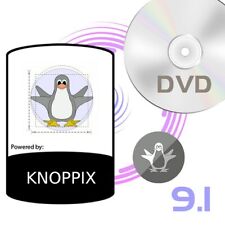
KNOPPIX 9.1 LINUX INSTALL & LIVE DVD
$9.99
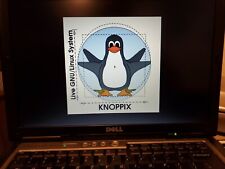
Knoppix Linux Bootable OS v8.6 "Original Live Operating System" 32G USB Stick
$20.30

Acer Aspire One 9 inch Netbook ZG5 512MB RAM 8GB SSD HD Knoppix Linux WiFi VGA
$79.99

Knoppix Linux Bootable OS v8.6 "Original Live Operating System" 16G USB Stick
$19.95



 Reply With Quote
Reply With Quote








